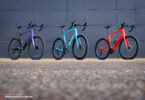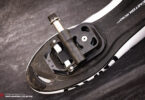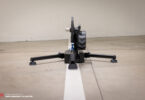Along with its fresh look, the ROSE BACKROAD GRX RX810 Di2 is equipped with Shimano’s newest electronic groupset. Read on to find out about the strengths and weaknesses of this gravel bike.
Click here for an overview of the best gravel bike 2020 group test.
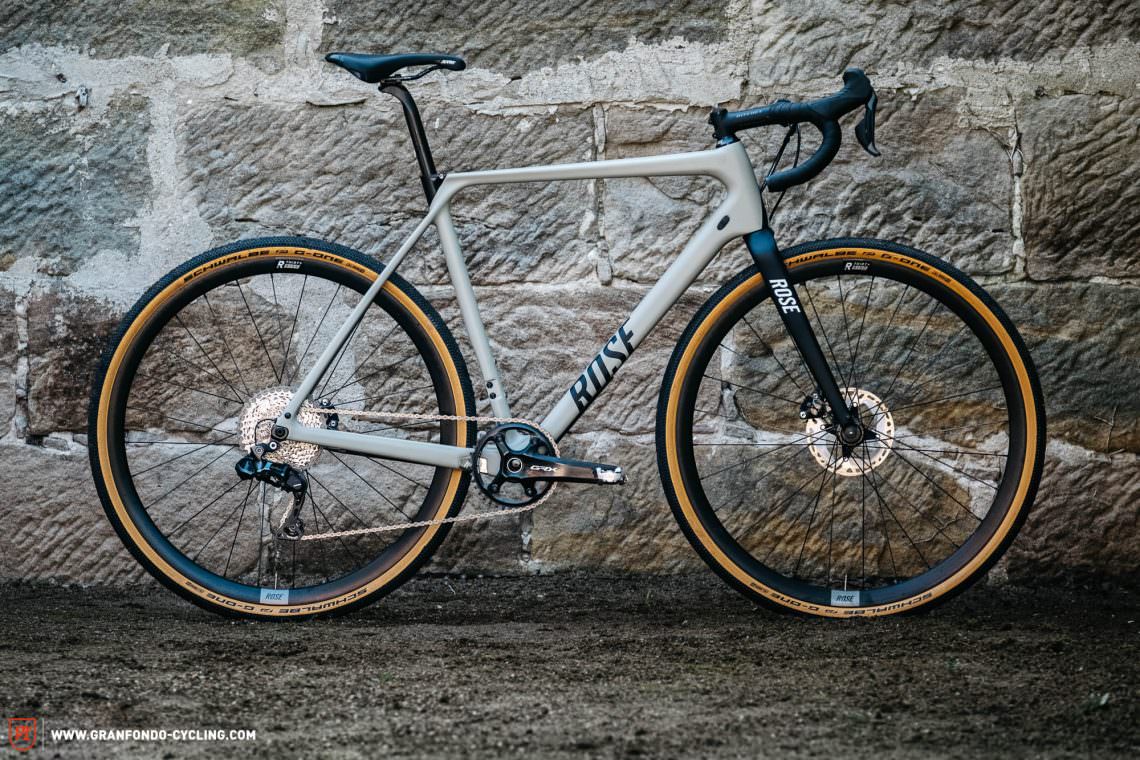
The ROSE BACKROAD has become a bit of a classic in the European gravel market. For 2020, the family-run company from Bocholt has given its evergreen model a new groupset, speccing the new Shimano GRX RX810 Di2 drivetrain with additional satellite shifters on the bar tops. With a 40 t chainring and 11-42 t cassette, you have 11 gears that shift with the Japanese precision you would expect. The cockpit comes courtesy of Ritchey WCS components: the 420 mm Butano carbon bars and lengthy 120 mm C220 stem provide a svelte overall finish. The ROSE R Thirty wheels are shod in tan wall 700 x 40C Schwalbe G-One All-Round TLE tires that harmonise nicely with the sand-coloured carbon frame. The geometry has remained the same since 2017, designed around a proven stack-to-reach ratio of 1.5. The traditional forms of the frame are timeless in their design, and a refreshing sight amongst the angled top tubes and dropped seat stays of the competition. Weighing in at 8.79 kg in size 57, the BACKROAD is in the top half of the test. But look at the price and, just like the Canyon Grail AL 7.0, you’ll find excellent value for money. The ROSE costs “only” € 3,199.
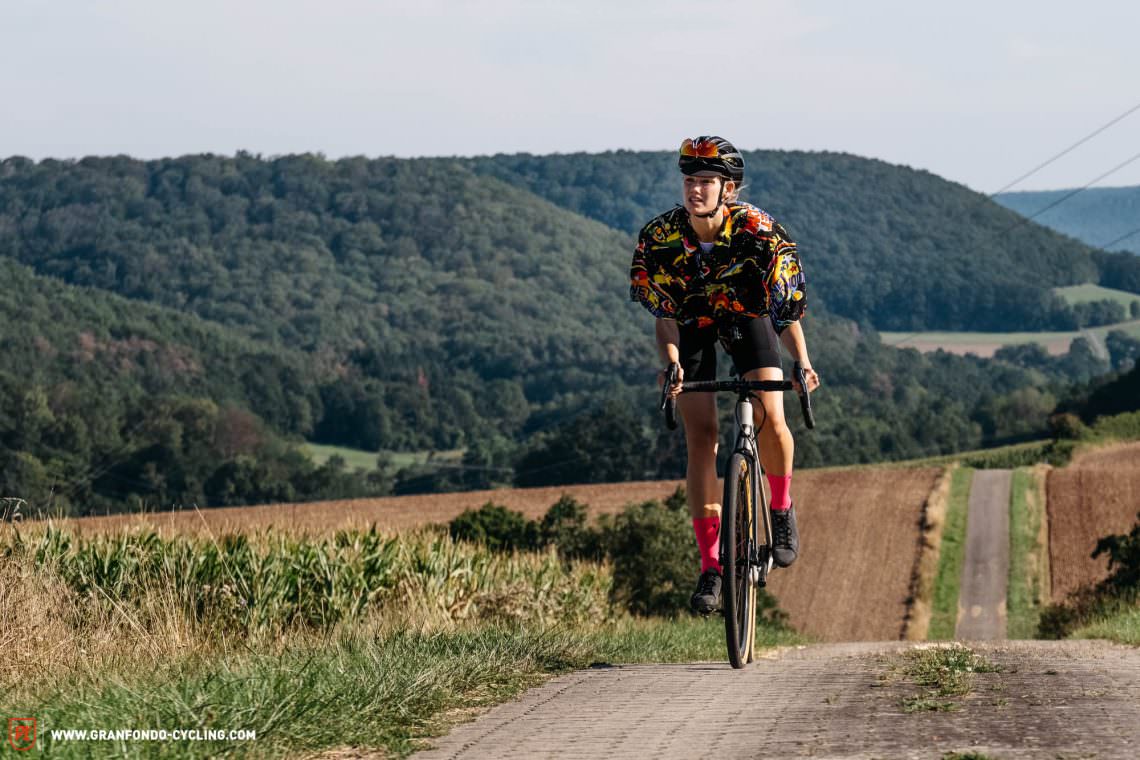
The ROSE BACKROAD GRX RX810 Di2 in detail
Drivetrain Shimano GRX RX810 Di2
Gearing 40 t and 11-42 t, 1×11
Brakes Shimano GRX RX810, 160/160 mm
Handlebar Ritchey WCS Butano Carbon, 420 mm
Stem Ritchey WCS C220, 120 mm
Seatpost ROSE RC-170 Carbon, 25 mm offset
Wheels ROSE R Thirty Disc
Tires Schwalbe G-One All-Round TLE 700 x 40C
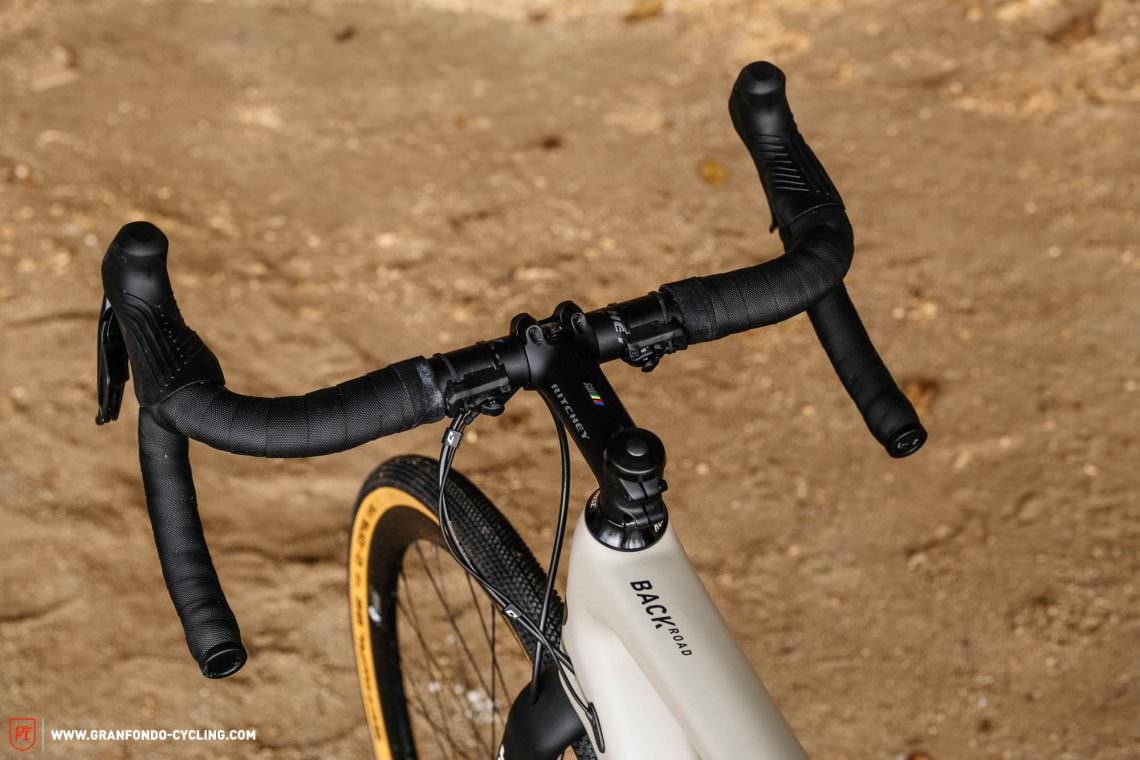
The additional Di2 shift buttons result in easy gear changes when riding on the tops.
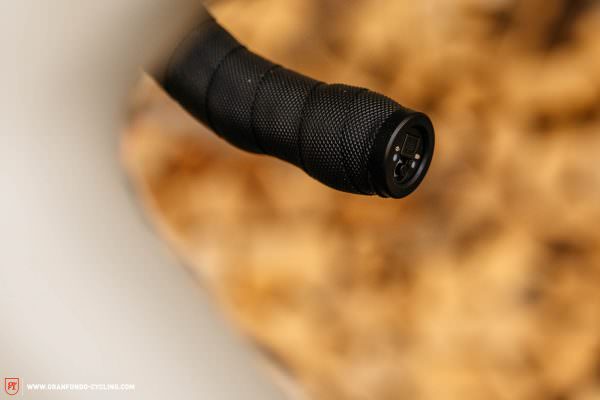
The Di2 junction box is hidden in the end of the bars. It’s easy to reach, but also nicely integrated.
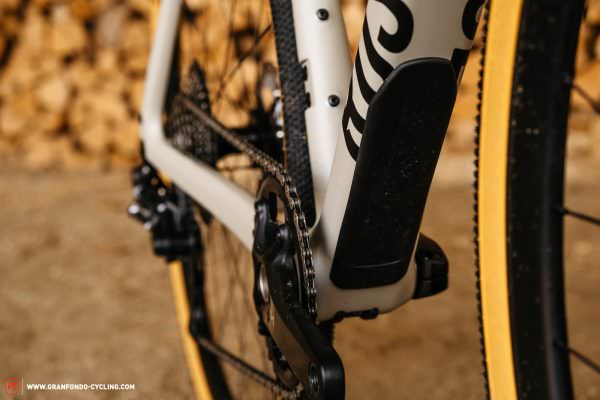
The down tube protector prevents damage from stones but also means you won’t be able to mount an additional bottle cage.
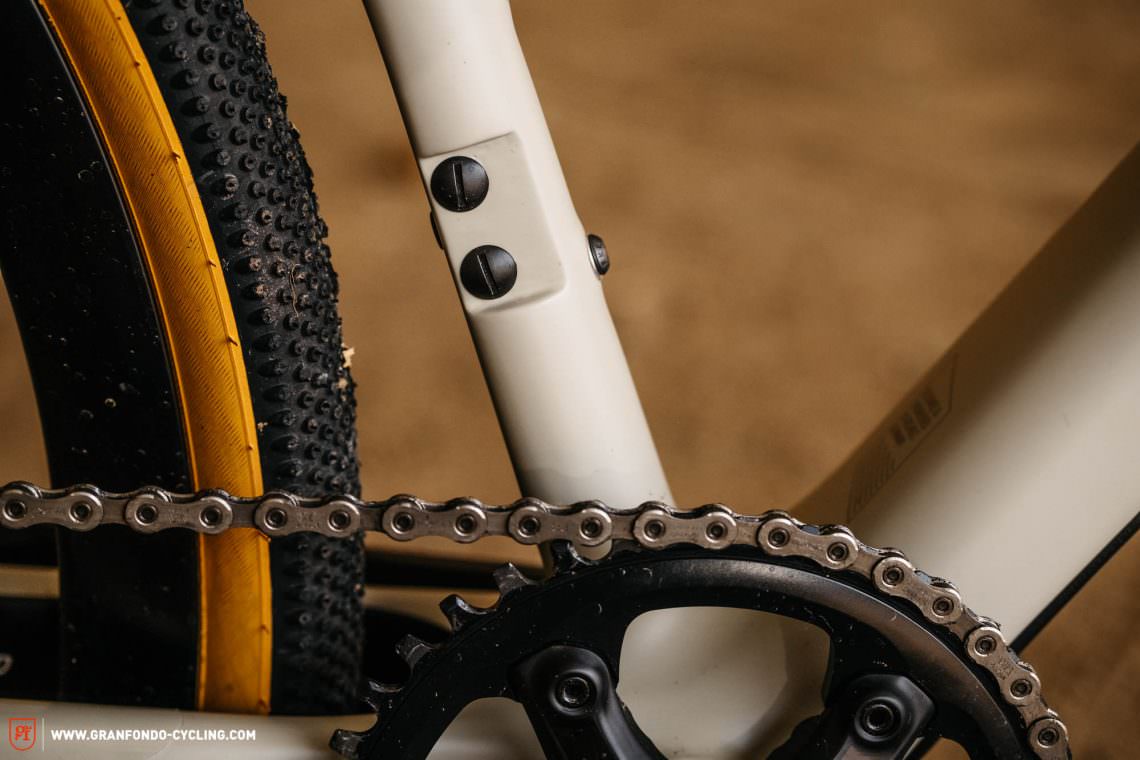
The front derailleur mount isn’t glaringly obvious and offers the option for 2x groupsets.
| Size | 51 | 54 | 57 | 59 | 62 |
|---|---|---|---|---|---|
| Seat tube | 483 mm | 513 mm | 543 mm | 563 mm | 593 mm |
| Top tube | 525 mm | 540 mm | 555 mm | 568 mm | 582 mm |
| Head tube | 130 mm | 147 mm | 164 mm | 174 mm | 188 mm |
| Head angle | 71.0° | 71.5° | 72.0° | 72.0° | 72.0° |
| Seat angle | 74.0° | 73.8° | 73.5° | 73.3° | 73.0° |
| Chainstays | 425 mm | 425 mm | 425 mm | 425 mm | 425 mm |
| BB Drop | 60 mm | 60 mm | 60 mm | 60 mm | 60 mm |
| Wheelbase | 1,016 mm | 1,025 mm | 1,033 mm | 1,043 mm | 1,054 mm |
| Reach | 370 mm | 377 mm | 384 mm | 391 mm | 398 mm |
| Stack | 541 mm | 559 mm | 577 mm | 587 mm | 599 mm |
The ROSE BACKROAD GRX RX810 Di2 in review
Our test team found the BACKROAD to be a quick accelerator. There’s nothing to fault in terms of acceleration or efficiency and the new GRX RX810 Di2 drivetrain works very well, shifting precisely on rough ground. We particularly like the additional shift buttons for relaxed cruising in the tops, making everything easier and more comfortable. That suits the ROSE well, though it does often invite you to blast through the forest thanks to its stable ride. Likewise, the riding position with the long 120 mm stem is relatively aggressive, resulting in a stretched out position that puts lots of pressure on the front wheel.
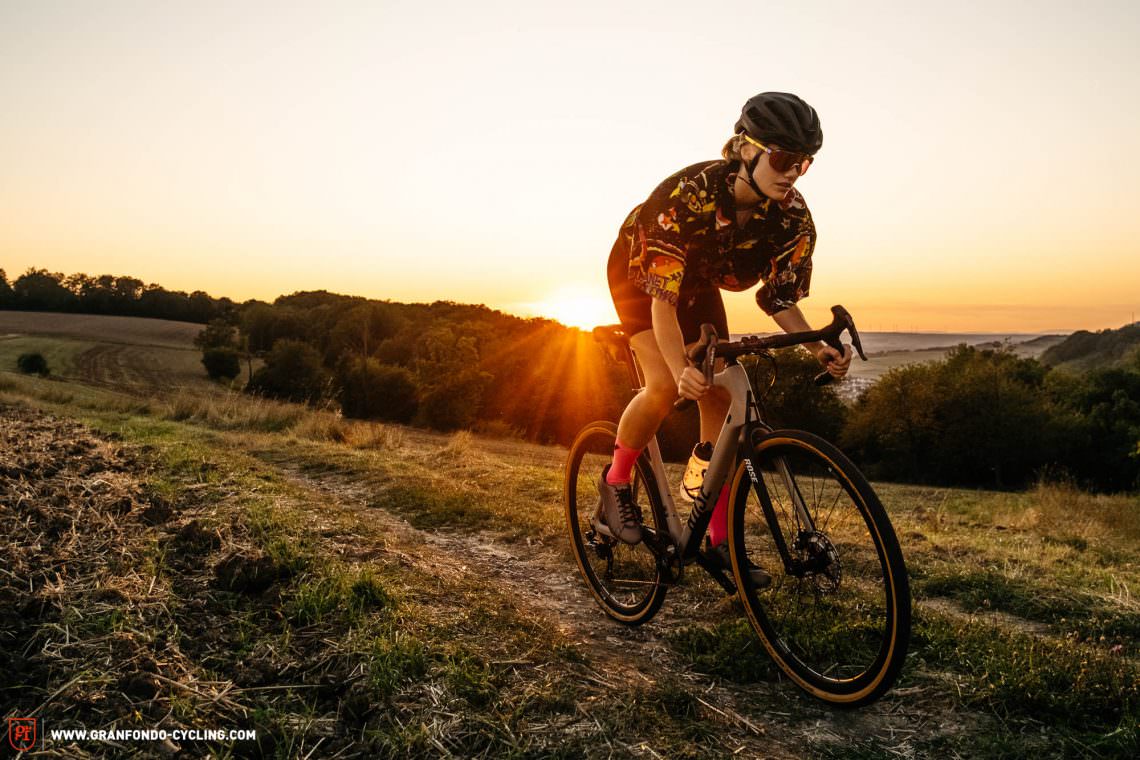
Higher volume tires for increased comfort.

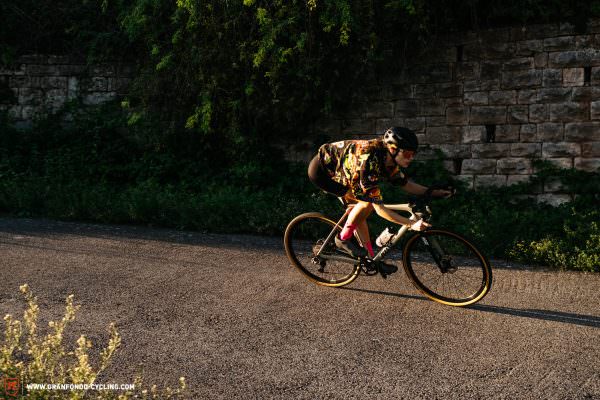
The stylish bike from Bocholt continues to cut a fine figure on compacted surfaces.
That makes the bike, as the name suggests, particularly well suited to broken up tarmac and compacted gravel roads. In more demanding terrain, it reaches its limits and tends to be a little difficult to handle through tight corners. Its limited comfort is due to the small amount of compliance of the frameset and the stiff wheels. Larger volume tires would no doubt result in a more secure ride on rough terrain and a higher level of overall comfort.
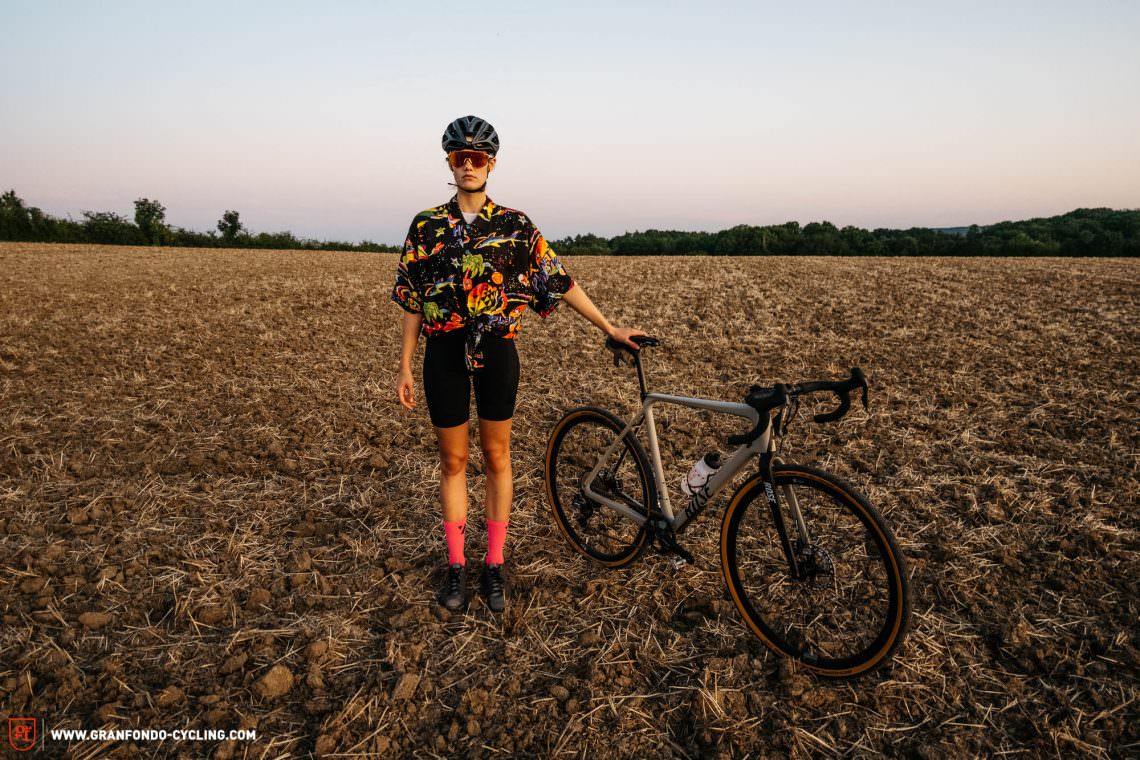
Conclusion
The ROSE BACKROAD GRX RX810 Di2 is a solid gravel all-rounder which is most at home on compacted gravel and chopped up roads. Thanks to its appealing design and the modern groupset, the frameset still feels up to date despite entering its fourth season. Thanks to the numerous configuration options, those who are looking for a road-bike-familiar position that invites them to leave the roads and venture a bit further afield will be well served here.
Tops
- accelerates to speed willingly
- neatly executed integration
- excellent value for money
Flops
- limited comfort
- not as capable on technical terrain
Riding Characteristics
4Agility
- cumbersome
- playful
Stability
- nervous
- confident
Handling
- demanding
- balanced
Fun factor
- boring
- lively
Value for money
- terrible
- very good
For more info: rosebikes.com
Click here for an overview of the best gravel bike 2020 group test.
All bikes in test: Argon 18 Dark Matter | Cannondale Topstone Carbon Ultegra RX | Canyon Grail AL 7.0 | Cervélo Áspero | Giant Revolt Advanced Pro Force | Kona Libre AL | Liteville 4-ONE MK1 | OPEN WI.DE. | Pivot Vault Team Force | ROSE BACKROAD GRX RX810 Di2 | Santa Cruz Stigmata CC | Specialized Turbo Creo SL Expert EVO | Standert Pfadfinder | Trek Domane SLR 9 eTap
No, it’s not about perfect race tracks, it’s about efficiency. Fast, fleet-footed and efficient – those who want to speed along high-speed passages need a defined and spritely bike that accelerates with ease and efficiency. Nevertheless, reliable components are important too. We interpret “Smooth tarmac” bikes as follows: Hard efforts at high speeds with a maximum efficient bike on a consistently well-paved road. Effort-joy ratio: 80:30 (not everything has to be 100%!)↩
… also known as bike riding. Broken-up roads in the hinterland, deadlocked gravel roads, loose surfaces – sometimes muddy, sometimes bone-dry. For this, it takes bikes with super all-round, handling and wearing qualities uphill and downhill. Effort-joy ratio: 50:50↩
If you want to use your bike almost every day, you usually do not need an extremely tuned racing machine. Solid components, which are able to cope with the rigours of continuous usage in any kind of weather, are part of the basic equipment. At the same time, the bike should have practicable details: integrated fenders/assembly options, luggage racks/attachment points and a light system or at least the option of installing bike lights. The position on the bike should be rather relaxed, the overall comfort high, so that the Afterwork Ride becomes a cure and not a curse. Effort-joy ratio: 30:70↩
You can find more info about our rating system in this article: Click here! ↩
Did you enjoy this article? If so, we would be stoked if you decide to support us with a monthly contribution. By becoming a supporter of GRAN FONDO, you will help secure a sustainable future for high-quality cycling journalism. Click here to learn more.
Words: Photos: GRAN FONDO-Team


